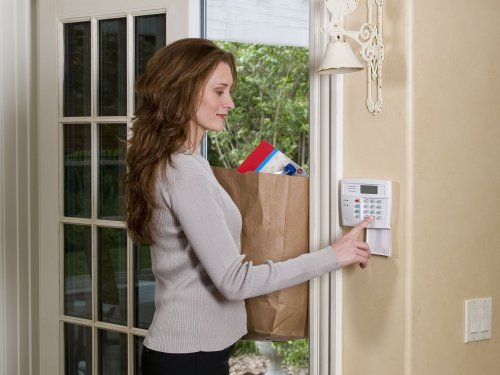The Basics of Home Security D-Y-I (part 2)
In the last article we introduced the first five principles for do-it-yourself prevention of theft and break-ins at home specifically for urban capitals, tourist areas and special economic areas. In this article we recommend more useful techniques that you can use to avoid unwanted events in and around your property.
6. Dogs and Pets: are the best signallers of unusual events. Even untrained dogs signal naturally when seeing, hearing and smelling someone or something unusual in their area. Signalling includes barking, and any unusual or nervous behaviour.
- It is advisable to follow up on your pet’s signals by investigating immediately; as in
 most cases simply being present is enough to frighten away an intruder.
most cases simply being present is enough to frighten away an intruder. - Reward your pet if you believe the signal was an accurate reaction to a stranger or unusual occurrence. This will condition your dog to keep watch over your home.
7. Homemade Alarms: Having a tinker in your own home to develop basic alarms is an inexpensive way to increase security.
- If you are confident with simple installations, motion sensors or light alarms are not too difficult to fit.
- More basically, you can hang a small bell in door openings or near windows so that it sounds when the door/window is opened.
- Similar devices can be created within the perimeter of your property such as trip wires made from low-visibility cord or fishing wire, simply attached to tins filled with stones.
8. Virtual Systems:Just the presence of a camera box, motion detector, or CCTV camera is enough to scare off most thieves…even if the devices are not working.
- Authenticity is key: make sure the equipment looks maintained and consider placing warning stickers in multiple languages on gates and windows indicating the presence of a functioning system.
- To make it more professional, refer to the internet to find the most realistic wording for your warning stickers.
- Or, let us at Kerberos Security install a fully functioning system for you.
9. Maintenance: of the perimeter of your house and your security system is crucial.
- Remove unwanted vegetation, and low hanging limbs or items that might be used to assist a thief in getting over your fence (or getting a good look inside your home).
- A weekly outdoor and perimeter inspection is advisable.
- It is equally important to maintain, clean and update any system that you have installed to extend its lifetime and ensure that it is working when you need it.
10. Lighting:Since the night is a common time for break-ins, make sure that your external lighting is sufficient and well maintained. Good lighting is a small but effective investment in your household security.
11. Preventative Information:Keep informed about the happenings in your neighbourhood. It is useful to know when strangers have been sighted, or if a group of labourers from outside of your community is dwelling a nearby construction site. It is not necessary to worry continuously, as most people are not looking to become thieves, however; just being “aware” is important.
12. Physical Barriers: help toslow down intruders and without them a property is wide-open to unwanted attention. We discussed the importance of functioning maintained fences, and functioning doors, gates and lock in the previous article. These are the first line of physical security.
- Increased security can be gained with the use of steel grill barriers, crossbars or wire mesh window barriers and external or internal grill gates/doors, all widely available on the Lao construction market.
- There are different designs and shapes on offer, but the most efficient ones are manufactured in a climb proof design with non-accessible fixings as extra options.
- These are even more efficient when combined with properly manufactured and certified security doors and windows. (I am not too sure what ‘graded’ security doors are…we might want to change the wording here to make this more clear – is it a manufacturers rating….or grating for doors and windows?)
- Another physical barrier within the home is a functioning home safe, for the storage of your most valuable property. Use the manufacturers ratings to choose a safe that provides the greatest protection, and do not forget to install the safe by having it fixed to the floor from inside the safe.
- The last but most visible physical barrier brings us back to the perimeter. Fence top spikes, razor wire (from basic to military grade) and even electric fencing are all available in Lao PDR.
13. Presence: Simply having someone at home is often enough to deter a thief. Modern alarm systems often integrate an automated “presence simulation” feature, that creates the illusion of someone being at home.
- You can create this illusion by turning on some energy saving lights and electronics when you leave the house for the evening.
- For a realistic effect you can install programmable switch timers set to turn on in the evening. Some electronics (including air conditioners) have timer functions you can use for this purpose. It is a good idea to check and see if the effect of your efforts is visible from the street.
In the next article we will look at what to do in the unfortunate event that you encounter an intruder in your house. For those who have read the first and second articles you now have a prevention kit to limit security risks at home. It is hoped that by using these techniques your home life will remain peaceful and without incident.
This article has been provided by Kerberos Security – the leading security service provider with focus on technical expertise, quality and partnership, in Laos since 2006



